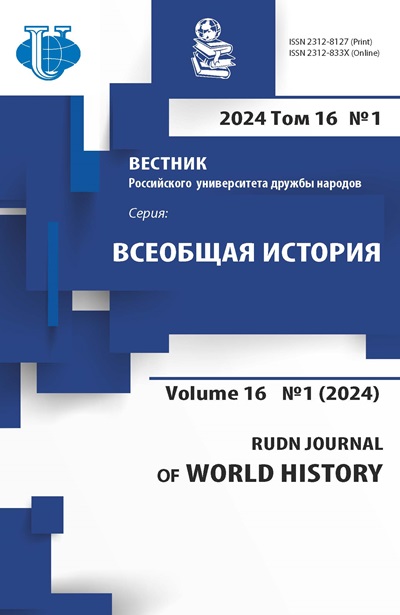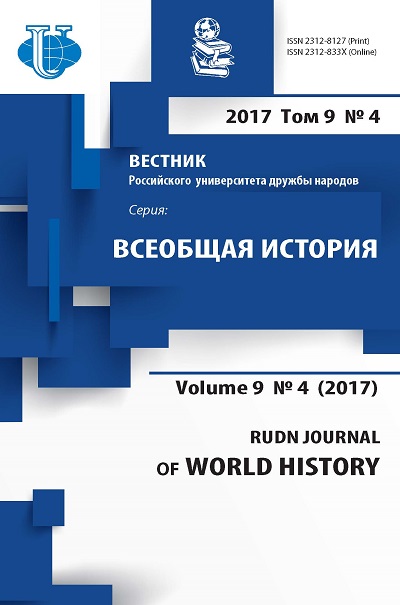Modern Political and Socio-Economic Situation in Afghanistan
- Authors: Naderi A.1
-
Affiliations:
- Ministry of foreign Affairs of the Islamic Republic of Afghanistan
- Issue: Vol 9, No 4 (2017)
- Pages: 353-362
- Section: Articles
- URL: https://journals.rudn.ru/world-history/article/view/18031
- DOI: https://doi.org/10.22363/2312-8127-2017-9-4-353-362
Cite item
Full Text
Abstract
After several long decades of civil war Afghanistan since 2001 has been the main focus of attention not only of leading political and economic analysts and researchers around the world. Western political scientists have already dubbed Afghanistan as «a failed state» due to continuing instability and internal conflicts. Nevertheless, many experts consider this formulation to be an exaggeration because since 2001 the government has made some positive changes. Summarizing the results of the analysis, the author concluded that today Kabul faces a difficult task to improve the life of the population, which can be achieved by stabilizing the domestic situation and by economic development.
About the authors
Asef Naderi
Ministry of foreign Affairs of the Islamic Republic of AfghanistanMalik Asghar Square, Kabul, Afghanistan
References
- Афганистан в начале XXI века / Под ред. В. Коргун. М.: ИВ РАН, 2004.
- Public Discussion: “Prospects for Afghanistan: Challenges to Political Stability”, 21 October 2014. URL: http://www.gcsp.ch/Events/Prospects-for-Afghanistan-Challenges-toPolitical-Stability.
- Afghanistan Population 2017. URL: http://www.worldometers.info/world-population/ afghanistan-population/.
- Lamer W., Foster E. Afghan ethnic groups: a brief investigation. Norfolk: Civil Military Fusion Center, 2011.
- Конфликты на Востоке: Этнические и конфессиональные: Учеб. пособие для студентов вузов / Под ред. А.Д. Воскресенского. М.: Аспект Пресс, 2008.
- Wardak M., Zaman I., Nawabi K. The Role and Functions of Religious Civil Society in Afghanistan: Case Studies from Sayedabad and Kunduz. Kabul: Co-operation for Peace and Unity, 2007.
- Simonsen S. Ethnicising Afghanistan?: inclusion and exclusion in post-Bonn institution building. Third World Quarterly. 2004. № 25(4). P. 707 - 729.
- Islamic Republic of Afghanistan: Interim Poverty Reduction Strategy Paper. Washington: IMF, 2006.
- Hartwell M. Negotiating Civil-Military Space: Redefining Roles in an Unpredictable World. Abingdon, Oxon: Routledge, 2016.
- Вызовы безопасности в Центральной Азии / Под. ред. И.Я. Кобринской. М.: ИМЭМО РАН, 2013.
- Qazi S., Ritzen Y. Afghanistan: Who controls what. URL: http://www.aljazeera.com/indepth/interactive/2016/08/afghanistan-controls-160823083528213.html.
- IMF Report for Selected Countries and Subjects: India. URL: https://www.imf.org/external/pubs/ft/weo/2016/02/weodata/weoselser.aspx?c=512&t=1.
- World donors pledge $15 billion for Afghanistan. URL: http://www.aljazeera.com/ news/2016/10/afghanistan-aid-donors-pledge-billions-brussels-161005130723718.html.
- Loewenstein A. Natural Resources Were Supposed to Make Afghanistan Rich. Here’s What’s Happening to Them. URL: https://www.thenation.com/article/resources-weresupposed-to-make-afghanistan-rich/.
- Dearing M., Braden C. Robber Barons Rising: The Potential for Resource Conflict in Ghazni, Afghanistan. Stability: International Journal of Security & Development. 2014. № 3(9). P. 1-14.
- Старчак М. Противодействие наркопроизводству в современном Афганистане: оценка эффективности. Мировая экономика и международные отношения. 2008. № 4. С. 82-91.
- World donors pledge $15 billion for Afghanistan. URL: http://www.aljazeera.com/ news/2016/10/afghanistan-aid-donors-pledge-billions-brussels-161005130723718.html.
- Visalli D. Afghanistan, Ecology and the End of War. The Centre for Research on Globalization. Available at: http://www.globalresearch.ca/afghanistan-ecology-and-the-end-ofwar/5326749.
- OEC Report on Afghanistan Economy. URL: http://atlas.media.mit.edu/en/profile/country/afg/#Exports.
- Simon M. The Drug Trade in Afghanistan: Understanding Motives behind Farmers’ Decision to Cultivate Opium Poppies. Foreign Policy Journal. Available at: https://www. foreignpolicyjournal.com/2015/11/27/the-drug-trade-in-afghanistan-understanding-motives-behind-farmers-decision-to-cultivate-opium-poppies/. (accessed: 21.06.2017).
- Gavrilis G. The Good and Bad News about Afghan Opium. Council on Foreign Relations. Available at: https://www.cfr.org/expert-brief/good-and-bad-news-about-afghan-opium. (accessed: 21.06.2017).
- Caulkins J., Kulick J., Kleiman M. Think Again: The Afghan Drug Trade. Foreign Policy. Available at: foreignpolicy.com/2011/04/01/think-again-the-afghan-drug-trade-2/ (accessed: 21.06.2017).
- Rashid A. Descent into Chaos; the U.S. and the Disaster in Pakistan, Afghanistan, and Central Asia. New York: Penguin Books, 2009.













